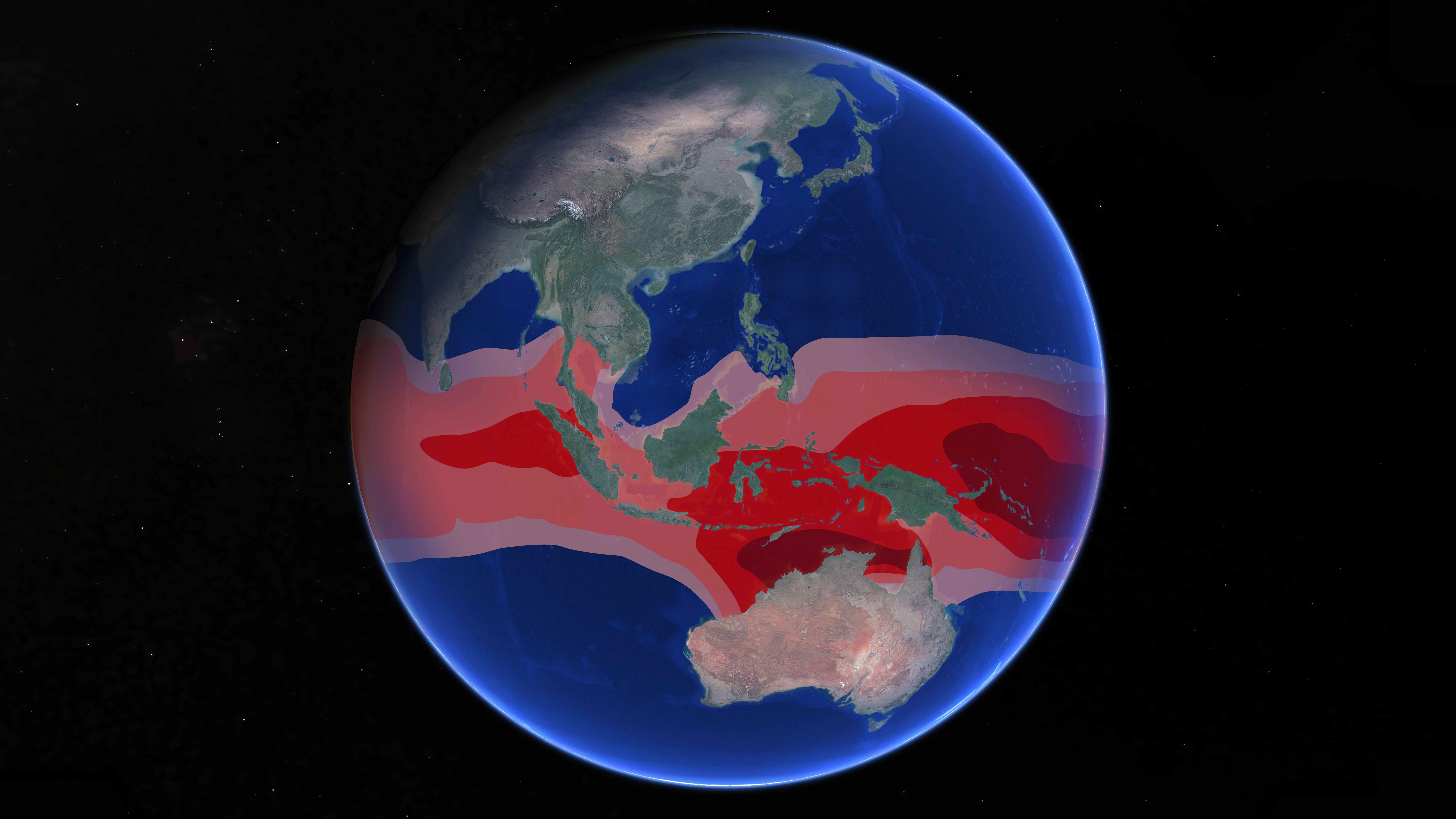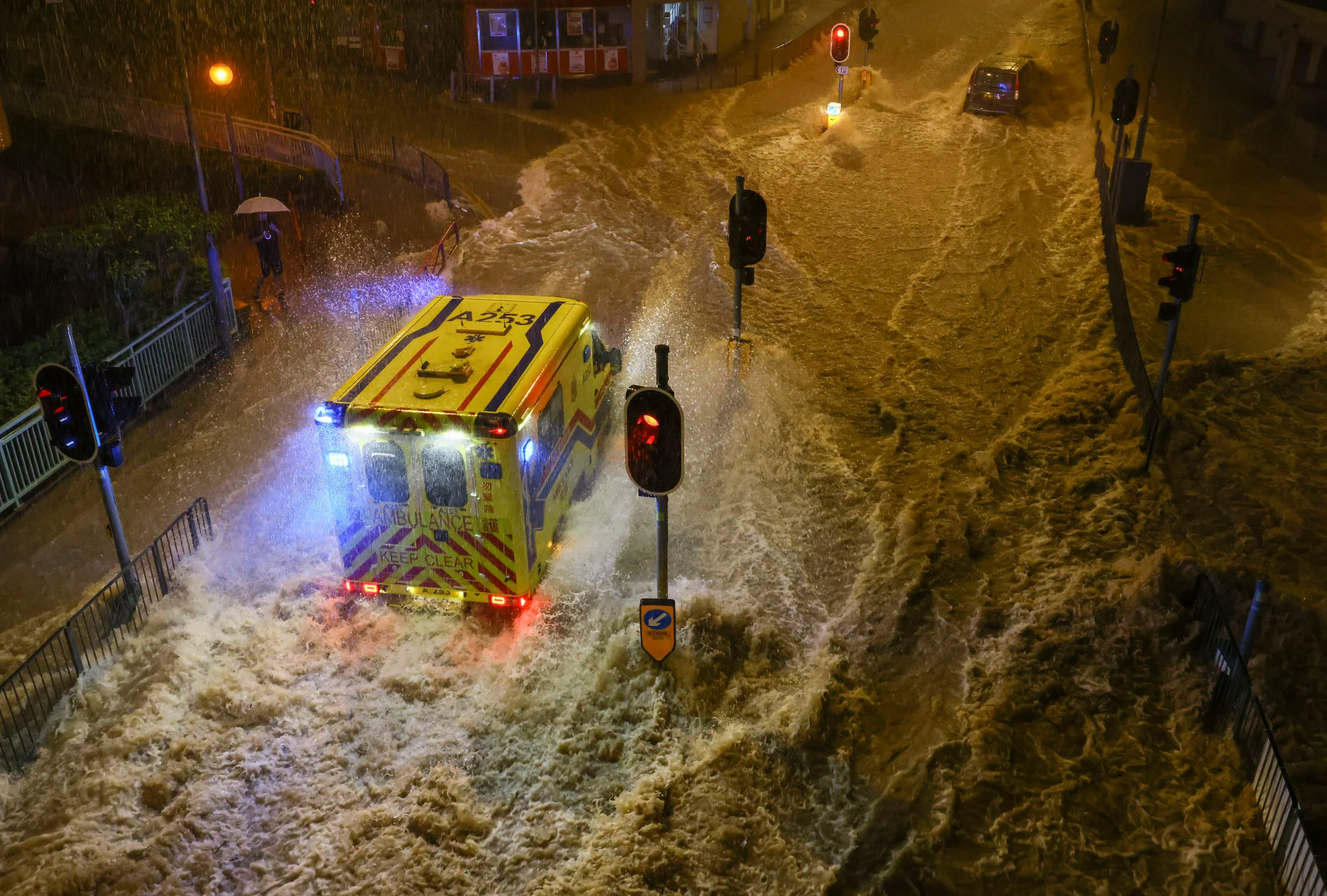Research
Table of contents:
- Indo-Pacific Warm Pool and Climate Change
- Madden-Julian Oscillation
- Tropical Cyclone (RGTracks-20C)
- Climate And Weather Extremes, Climate Asymmetry
- Interdisciplinary Research: Climate Science and Data Science
- Funding Support

The Indo-Pacific Warm Pool is the warmest ocean water body in the world, acting as the largest "heat engine" that drives the global climate system. Even minor changes in the warm pool can have significant effects on the atmosphere. Our research focuses on how this warm pool responds to greenhouse warming, and the subsequent impacts on the climate system.
Find out more:
The slowly expanding Indo-Pacific warm pool –– from the convection view
Leung, J. C. H., Zhang, B., Gan, Q., Wang, L., Qian, W., & Hu, Z. Z. (2022). Differential expansion speeds of Indo-Pacific warm pool and deep convection favoring pool under greenhouse warming. npj Climate and Atmospheric Science, 5(1), 97. (Link)
Gan, Q., Leung, J. C. H., Wang, L., & Zhang, B. (2023). Weakening seasonality of Indo-Pacific warm pool size in a warming world since 1950. Environmental Research Letters, 18(1), 014024. (Link)

The Madden-Julian Oscillation (MJO) is the largest intraseasonal (20~100 days) tropical atmospheric system. Once initiated, it propagates as a pulse from the Indian Ocean to the Pacific Ocean. Its unique timescale enables the MJO to connect large-scale climate variability with smaller-scale weather systems. We aim to understand how the MJO may react to the intensifying Indo-Pacific Warm Pool under the past and future climate change, as well as its potential impacts on global extreme weather events.
Find out more:
He, W., Yang, Y., Leung, J. C. H., Xiang, K., Wei, D., Cai, B., Kong, H., Tu, S., Zhang, B. (2025). Enhancing MJO convective activity in the twentieth century. Journal of Climate. (Link)
Leung, J. C. H., Qian, W., Zhang, P., & Zhang, B. (2022). Geopotential-based Multivariate MJO Index: extending RMM-like indices to pre-satellite era. Climate Dynamics, 59(1), 609-631. (Link)
Leung, J. C. H., & Qian, W. (2017). Monitoring the Madden–Julian oscillation with geopotential height. Climate Dynamics, 49, 1981-2006. (Link)

Tropical cyclones (TCs), also known as hurricanes or typhoons, are among the most impactful weather systems that cause severe disasters over the coastal regions and even inland areas. However, historical TC records are often incomplete, particularly for the pre-satellite era (before the 1980s), due to insufficient observations. This has hindered comprehensive studies on long-term TC activity trends and their connection to climate changes. In this context, we take advantage of the completeness and continuity of model reanalysis products to construct a comprehensive historical TC dataset spanning from 1850 to 2014, namely the Reanalysis-Based Global Tropical Cyclone Tracks Dataset for the Twentieth Century (RGTracks-20C)) . The RGTracks-20C is built to address issues of incomplete TC intensity and position records in the early years. It is a publicly available reanalysis-based TC dataset spanning the whole 20th century, and is open to the public for research use.

Find out more:
Ye, G., Leung, J. C. H., Dong, W., Xu, J., Li, W., Qian, W., Kong, H., & Zhang, B. (2025). A Reanalysis-Based Global Tropical Cyclone Tracks Dataset for the Twentieth Century (RGTracks-20C). Earth System Science Data (Under review) (Link)
GitHub page: Reanalysis-Based Global Tropical Cyclone Tracks Dataset for the Twentieth Century (RGTracks-20C). (Link)

Climate change is increasing the frequency and intensity of extreme weather events, such as heatwaves, droughts, floods, and hurricanes, which pose larger and larger risks to the human society. These extreme events, considered outliers in statistical terms, exhibit asymmetry and are altering the distributions of meteorological variables. Our team works on discovering patterns and dynamics of extreme climate and weather events, as well as exploring methods quantifying the extremeness and asymmetry of these events.
Find out more:
Liu, J., Leung, J. C. H., Huang, H., Xu, D., Li, W., Qian, W., & Zhang, B. (2024). Observed northward shift of large hailstorms in the eastern United States since 2000. Environmental Research Letters, 19(2), 024010. (Link)
Huang, H., Leung, J. C. H., Chan, J. C., Liu, J., Qian, W., & Zhang, B. (2023). Recent unusual consecutive spring tropical cyclones in North Atlantic and winter oceanic precursor signals. Journal of Meteorological Research, 37(2), 208-217. (Link)
Qian, W., Du, J., Leung, J. C. H., Li, W., Wu, F., & Zhang, B. (2023). Why are severe weather and anomalous climate events often associated with the orthogonal convergence of airflows? Weather and Climate Extremes, 42, 100633. (Link)

The climate system is a highly nonlinear and complex system. Traditional statistical tools often struggle to give a full picture of how the climate system evolves and to provide a complete understanding of the relationships among climate variability. One of our goals is to explore the potential of advanced data science tools and techniques to address these unresolved challenges in climate science, uncovering hidden patterns within high-dimensional climate data.
Find out more:
Xu, D., Lu, Z., Leung, J. C.-H., Zhao, D., Li, Y., Shi, Y., Chen, B., Nie, G., Wu, N., Tian, X., Yang, Y., Zhang, S., Zhang, B. (2025). AI Models Still Lag Behind Traditional Numerical Models in Predicting Sudden-Turning Typhoons. Science Bulletin. (Link)
Yu, D., Kong, H., Leung, J. C. H., Chan, P. W., Fong, C., Wang, Y., & Zhang, B. (2024). A 1D Convolutional Neural Network (1D-CNN) Temporal Filter for Atmospheric Variability: Reducing the Sensitivity of Filtering Accuracy to Missing Data Points. Applied Sciences, 14(14), 6289. (Link)
Pang, N., Kong, H., Wong, C., Li, Z., Du, Y., & Leung, J. C.-H. (2025). A CNN-Based Downscaling Model for Macau Temperature Prediction Using ERA5 Reanalysis Data. Applied Sciences, 15(10), 5321. (Link)
Lu, Z., Xu, J., Chen, Z., Yang, J., Leung, J. C. H., Xu, D., & Zhang, B. (2024). Combinatorial Optimization of Physics Parameterization Schemes for Typhoon Simulation Based on a Simple Genetic Algorithm (SGA). Journal of Meteorological Research, 38(1), 10-26. (Link)
(To be updated)
The above research are supported by the following:
- National Natural Science Foundation of China (China): On the long-term change in the seasonality of Indo-Pacific Warm Pool and its impacts on the seasonality of tropical intraseasonal oscillation (Grant# 42405038, 2025–2027)
- Guangdong Basic and Applied Basic Research Foundation (China): Long-term variability of MJO activity and its impacts on Northwest Pacific tropical cyclones in the past 100 years (Grant# 2020A1515110275, 2020–2023)
- Guangdong Province Introduction of Innovative R&D Team Project (China): R&D on Key Technology in Typhoon Numerical Prediction Model (Grant# 2019ZT08G669, 2020–2025)
- National Natural Science Foundation of China (China): Variability of Northern Hemispheric Polar and Arctic Cells and Their Impacts on Mid-High Latitude Climate Anomalies (Grant# 41775067, 2018–2021)
- National Large Scientific and Technological Infrastructure “Earth System Numerical Simulation Facility” (https://cstr.cn/31134.02.EL)